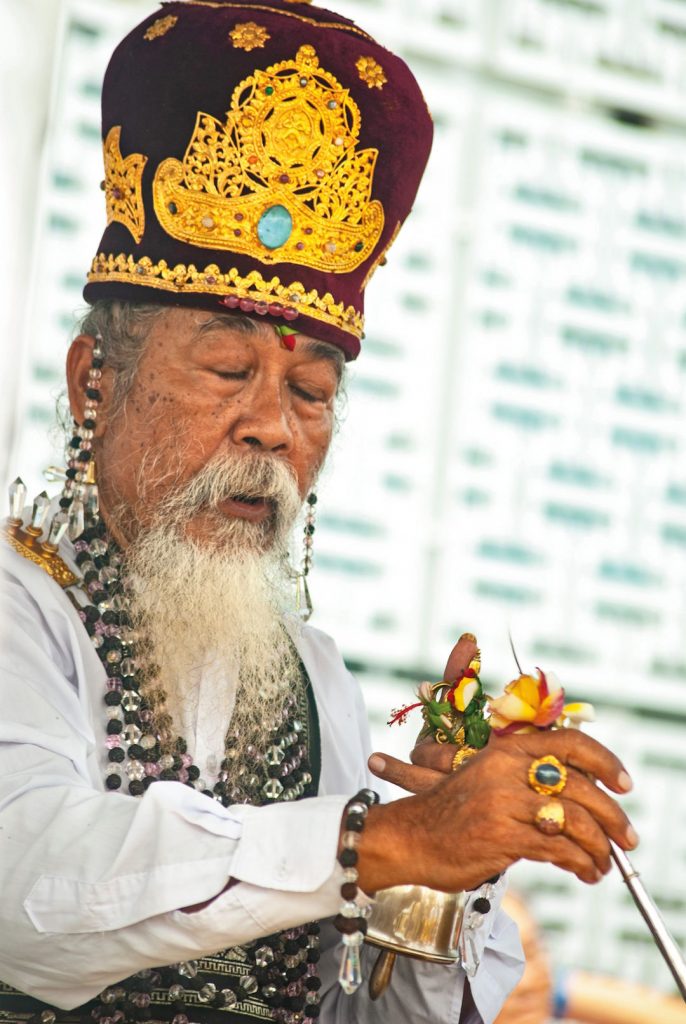To become a Balinese Hindu high priest, or sulinggih, prospective priests must first go through the madiksa ritual. Some refer to it as a ‘death ritual’, as for the priest to be reborn as a new, cleansed man or woman, he or she must first “die”.

A prerequisite to become a Catholic priest is being male. For the Balinese Hindu, though not common, many high priests are in fact female; but this isn’t the only difference between the two faiths when it comes to entering the dominion of priests.
Often when one thinks about a vocation – or ‘calling’ – to priesthood, one is greeted by a few questions. What makes one eligible? Which seminary to join? When will one start the ministerial duties?
Whilst Christianity believes anyone can enter priestdom, not all Balinese can reach the utmost noble position of sulinggih. There are many processes to becoming a Balinese high priest, known as sulinggih, or pandita or pedanda). And to ascend to the highest title, one must go through a purification ritual like no other — a rebirth.
Through the philosophy of ‘samapada’ everyone is seen as equal, so even those seeking to become the holiest of representatives have layers that must be peeled prior to being sanctified. Whether previously a student, a member of a household, one must leave that life behind, quite literally.
The Madiksa ritual is performed at midnight, where the prospective high priest will be cloaked in a white shroud covered with handwritten Sanskrit mantras, a prayer for the soul to leave the body. The ceremony is believed to be the pinnacle of one’s spiritual journey. A high priest will earn their holy position once they have attained spiritual and physical purity according to the teachings of dwijati. This means being birthed from a mother’s womb, and born again, as an enlightened person. Madiksa, loosely defined as ‘torture’, purifies one’s body and soul by ‘killing’ all forms of evil by what is believed to be a temporary cessation of all biological functions – in other words, they are said to be temporarily ‘dead’. This is why madiksa has earned the nickname as a ‘death ritual’, but really it is the rebirth that is the highlight. The reborn priest is deemed free of sins once they are reborn.
In this final stage of priesthood called wanaprasta, one must surrender his identity as a worldly being and rise up to become the sacred bridge between God and man.









